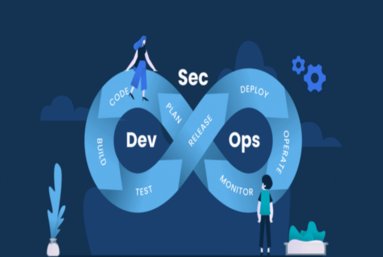
Bolstering Critical Infrastructure Resilience: Top 5 Vulnerability Management Strategies
The ever-evolving landscape of interconnected critical infrastructure, encompassing manufacturing, utilities, and smart cities, necessitates a proactive approach to cybersecurity. Cyberattacks targeting these systems can have cascading effects, disrupting essential services, jeopardizing public safety, and incurring significant financial losses.
This blog delves into five powerful vulnerability management strategies to fortify critical infrastructure and mitigate cyber risks.

The Evolving Threat Landscape

Manufacturing: Legacy Infrastructure and Limited Security Integration:
Many manufacturing facilities rely on legacy industrial control systems (ICS) and operational technology (OT) that weren’t built with cybersecurity in mind. These systems may have limited security features and outdated software, making them more susceptible to exploitation. A successful cyberattack could disrupt production lines by manipulating control systems, damage equipment through malfunctioning processes, or compromise sensitive data leading to production delays, safety incidents, and potential data breaches.
Smart Cities: Expanded Attack Surface and Data Risks:
The growing network of interconnected devices in smart cities, including traffic lights, building automation systems, environmental sensors, and citizen data platforms, creates a complex attack surface with numerous potential entry points for malicious actors. A cyberattack could disrupt traffic flow by manipulating traffic light controls, manipulate environmental controls in buildings leading to safety hazards, or compromise sensitive citizen data, leading to traffic congestion, public safety hazards, and potential privacy violations.


Energy & Utilities: Cascading Effects and Public Safety Impact:
SCADA systems, power grids, water treatment facilities, and communication networks form the backbone of modern society. A cyberattack could have devastating consequences, causing power outages that cripple entire regions, disrupt water treatment leading to potential contamination, or cause communication disruptions hindering emergency response efforts. These disruptions can severely impact public safety, economic activity, and public trust in essential services.
5 Powerful Vulnerability Management Strategies for Critical Infrastructure:
1. Continuous Asset Discovery and Inventory (CADR):
The foundation of effective vulnerability management lies in comprehensive asset discovery and inventory (CADR). This involves identifying and documenting all connected devices within your critical infrastructure, encompassing ICS in manufacturing facilities to sensors in smart buildings and environmental monitoring systems in smart cities. This comprehensive inventory allows for better risk assessment and prioritization of vulnerabilities, enabling more informed security decisions.
For instance, in a manufacturing facility, CADR would involve identifying not just the traditional IT infrastructure like computers and servers, but also industrial control systems (ICS) like PLCs (programmable logic controllers), HMIs (human-machine interfaces), and SCADA systems (supervisory control and data acquisition) that manage and monitor production processes. Similarly, in a smart city, CADR would involve identifying all connected devices like traffic lights, smart meters, environmental sensors, and building automation systems. Click here to learn more about techniques regarding industrial control systems (ICS) security.
2. Risk-Based Vulnerability Prioritization:
Not all vulnerabilities pose the same level of threat. A rigorous risk assessment helps identify and prioritize vulnerabilities according to their potential impact on operations, safety, or data security. This ensures that resources are directed towards mitigating the most critical vulnerabilities first, maximizing the effectiveness of your security efforts.
For example, in a power utility, a vulnerability in the SCADA system that controls power generation would be a high-priority risk, as it could lead to widespread power outages. On the other hand, a vulnerability in a less critical system, such as the employee portal, would be a lower priority. Similarly, in a smart city, a vulnerability in the traffic light control system would be a high priority due to potential public safety risks, while a vulnerability in a park irrigation system would be a lower priority
3. Robust Patch Management:
Timely patching of vulnerabilities is essential for mitigating cyber risks. Implementing automated patching processes whenever possible minimizes the risk window and streamlines security maintenance across all connected devices within your infrastructure, ensuring a more efficient and effective security posture.
Patch management is particularly crucial for critical infrastructure systems, as attackers often exploit known vulnerabilities. By automating the patching process, organizations can ensure that security updates are applied promptly, minimizing the window of opportunity for attackers. This is especially important for ICS and SCADA systems, which may not be easily updated due to concerns about disrupting operations.
4. Security Awareness and Training:
Employees remain a vital line of defence against cyberattacks. Regular security awareness training empowers your workforce to identify phishing attempts, protect sensitive data, and report suspicious activity. By investing in a culture of cybersecurity awareness among all personnel, you significantly reduce the human element in cyberattacks.
Security awareness training should be tailored to the specific roles and responsibilities of employees. For example, manufacturing employees in charge of handling sensitive data should receive specific training on data protection and handling procedures. Similarly, employees in smart cities who interact with citizens should be trained on how to handle citizen data and report suspicious activity.
5. Threat Intelligence and Incident Response:
The ever-evolving threat landscape necessitates proactive monitoring and response to emerging threats. Threat intelligence platforms provide valuable insights into the latest attack vectors, enabling organizations to stay ahead of potential attacks. Additionally, a well-defined incident response plan ensures swift and coordinated action in case of a cyberattack, minimizing its impact and facilitating a timely recovery.
For manufacturing facilities, threat intelligence platforms can focus on threats targeting industrial control systems, supply chain vulnerabilities, and insider threats. In the energy and utility sector, threat intelligence platforms should focus on threats targeting SCADA systems, power grid infrastructure, and potential disruptions to critical services. In smart cities, threat intelligence platforms should focus on threats targeting connected devices, data breaches, and potential attacks on critical infrastructure like transportation and communication systems. Click Here to learn more about Mitigation Techniques that can help you shape a more effective Threat Intelligence and Incident Response Strategy.
Conclusion
By implementing these five vulnerability management strategies, critical infrastructure organizations can significantly enhance their resilience against cyberattacks, protect sensitive data, and ensure the uninterrupted operation of essential services. Remember, cybersecurity is an ongoing journey, and continuous monitoring, adaptation, and investment in the latest security technologies are crucial for staying ahead of evolving threats.
Stay updated on the latest MITRE ATT&CK® for ICS tactics and techniques to enhance your vulnerability management strategies.
Predictive: Your Trusted Partner in Cybersecurity
Predictive offers a comprehensive suite of cybersecurity solutions tailored to the unique needs of critical infrastructure. Our expert team can help you implement these strategies effectively and ensure the protection of your valuable assets.
Visit our website at predictive.tisalabs.com to learn more about our services and how we can help you safeguard your critical infrastructure.
Related Posts


